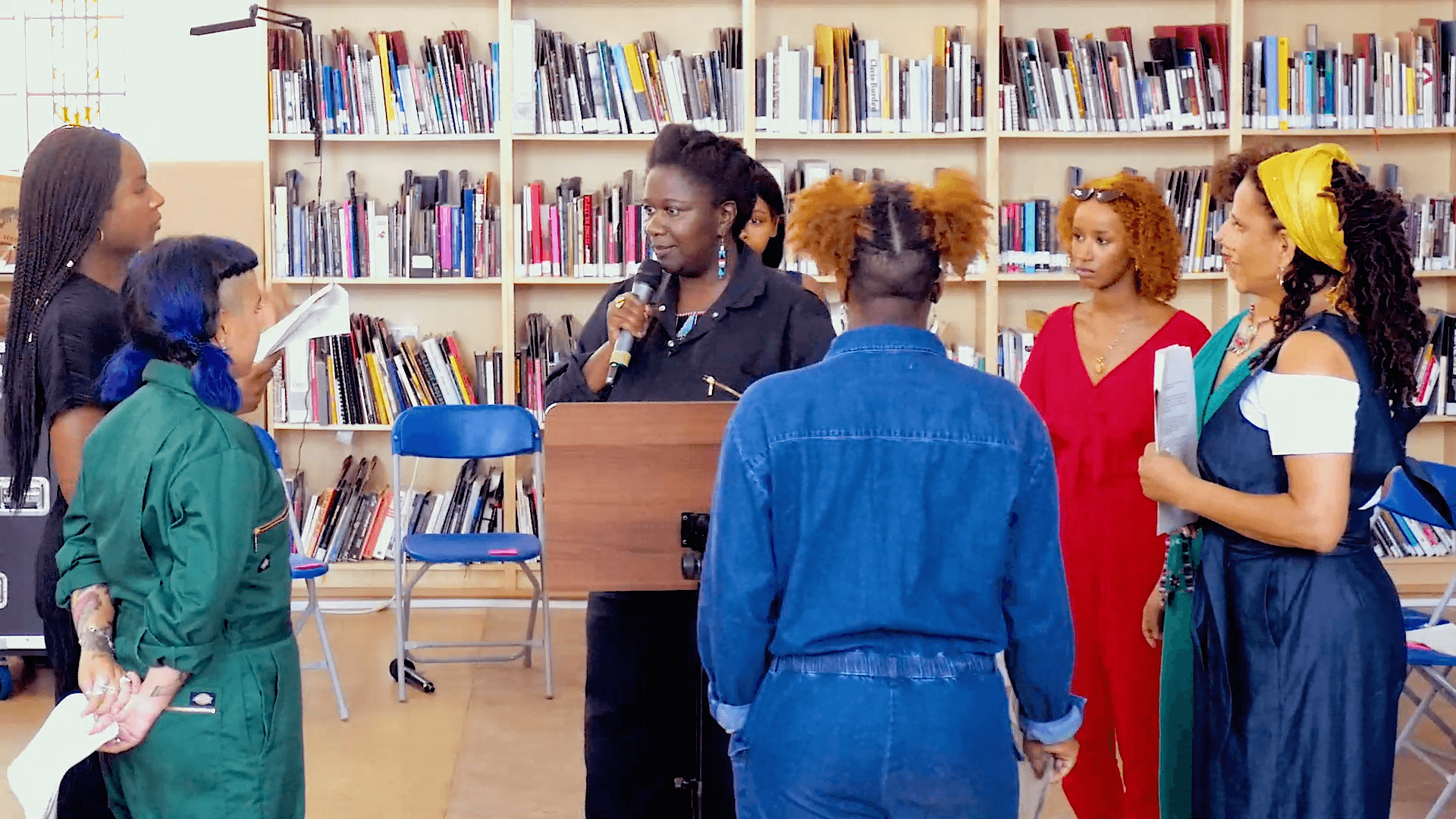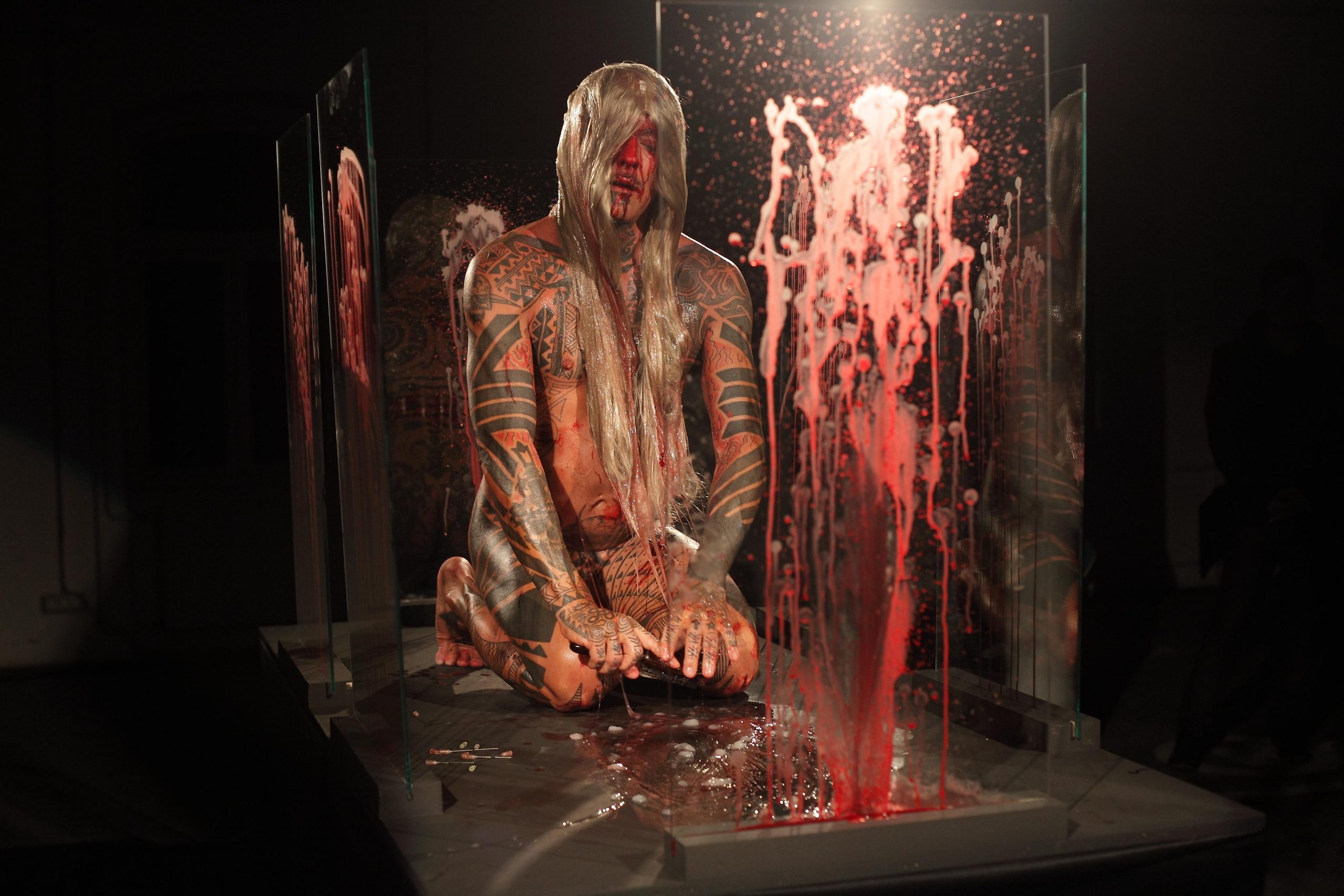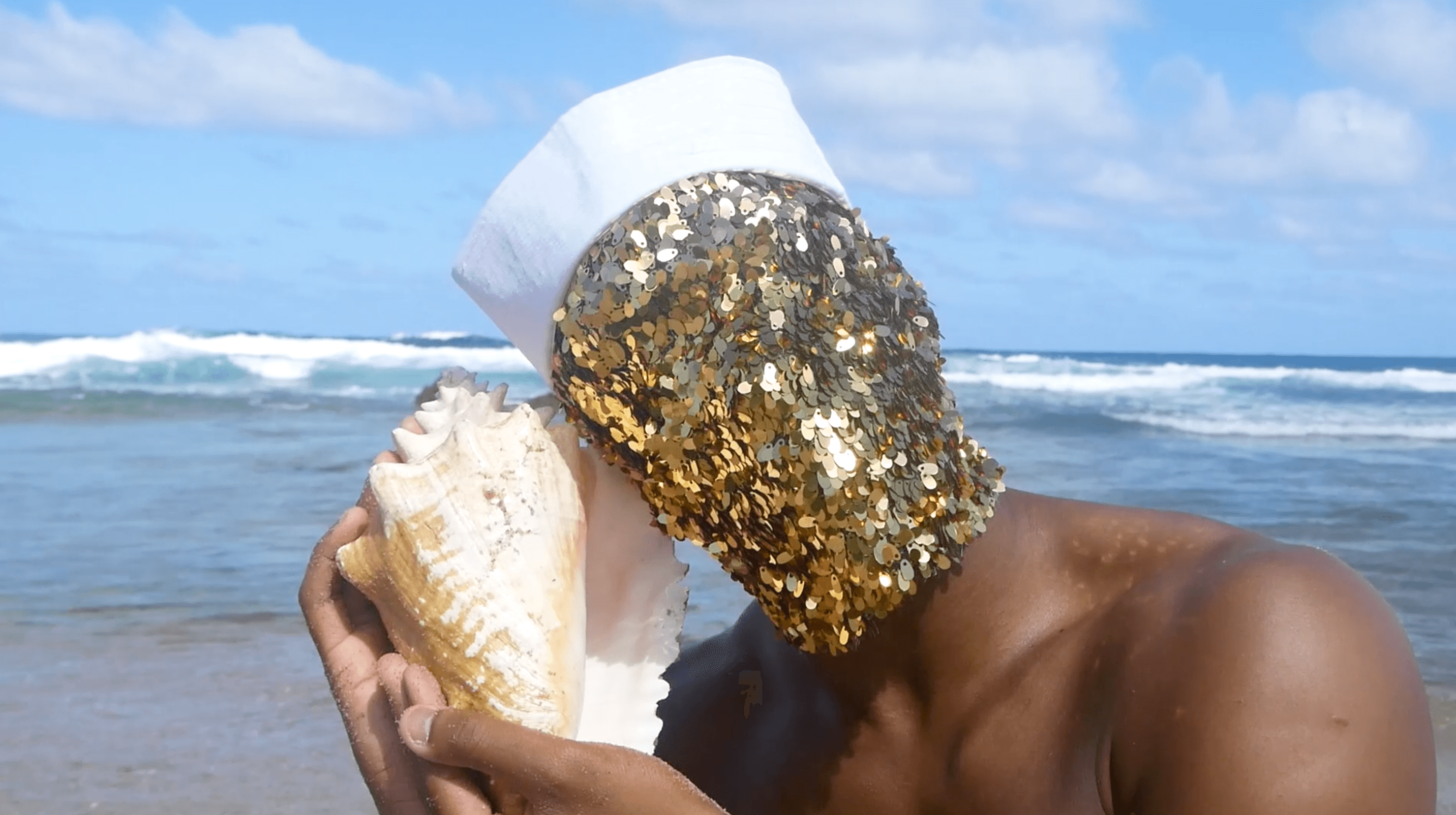What is Live Art?
Live Art is a cultural strategy to make space for experimental processes, experiential practices, and the bodies and identities that might otherwise be excluded from traditional contexts.
Rather than a description of an artform or discipline, Live Art is a way of thinking about what art is, what it can do, and where and how it can be experienced. Some may experience Live Art in a gallery, others in a theatre, and others still in forests or town squares, or as a process in which they are involved.
From intimate encounters to civic spectacles, from attendance at shows and installations to mass participation in virtual events, Live Art practices are concerned with all kinds of interventions in the public sphere and all kinds of interaction with an audience.
Whatever it might look like, and wherever it may take place, Live Art always explores the possibilities of the live event and the ways we can experience it.
At its most powerful, Live Art creates imperative dialogue, challenges conventions, and exemplifies progressive thought.
A Research Engine
At LADA, we think of Live Art as a research engine – one that is driven by artists.
To talk about Live Art is to talk about art that invests in ideas of process and presence as much as the production of objects or things; art that wants to test the limits of the possible and the permissible; and art that seeks to be alert and responsive to its contexts, sites and audiences.
It offers artists a space in which they can take formal and conceptual risks, look at different mediums of expression, explore endurance and ephemerality, and investigate intimacy.
 Declaration of Independence, Barby Asante, Library of Performing Rights Commission 2018. Still from video. Courtesy of the artist.
Declaration of Independence, Barby Asante, Library of Performing Rights Commission 2018. Still from video. Courtesy of the artist.
If you want to know what the mainstream will be up to in ten years’ time, just look at what Live Art is doing now.
Influences
Live Art is influenced by late 20th century Performance Art, where visual artists, in a rejection of objects and markets, turned to their body as the site and material of their practice, and by multiple generations of artists who broke the traditions and expectations of theatre and dance.
Now, it incorporates a huge range of practitioners, from those working at the edges of theatre, dance, film and video, to performance writing, socio-political activism and the new languages of the digital age.
 Anne, Richard and Paul, Morgan Quaintance, 2018. Still from video. Courtesy of the artist.
Anne, Richard and Paul, Morgan Quaintance, 2018. Still from video. Courtesy of the artist.
Live Art offers a haven to artists whose work does not comply with the strictures of traditional designations and gives those practices legitimacy within contemporary culture.
Intentions
For many artists, Live Art is a generative force. It wants to shock, to destroy pretence, create sensory immersion, break apart traditions of representation, and open different kinds of engagement or interaction.
For others, Live Art can be a means of connecting people, places and ideas, becoming a form of community building and cultural empowerment.
 Ron Athey, Self Obliteration, 2011, Ljubljana. Image by Miha Fras.
Ron Athey, Self Obliteration, 2011, Ljubljana. Image by Miha Fras.
The whole Declaration process has been one of revelation, sharing, and unfolding delight. The workshop time spent with other women was hugely valuable – not only in its creative stimulus but also in focusing our attention on the practices of self-care that sustain us as women of colour.
Identities
Live Art is made by a huge variety of artists, with a huge breadth of life experiences.
For artists of colour, women, queer, trans, disabled, migrant and working class artists, Live Art is a potent site where the disenfranchised and disembodied become visible, where the politics of difference are contested, and where new languages for the representation of ideas and identities can be explored.
 Adam Patterson, Looking for ‘Looking for Langston’, 2018. Still from video. Courtesy of the artist.
Adam Patterson, Looking for ‘Looking for Langston’, 2018. Still from video. Courtesy of the artist.
At its best, Live Art is rigorous, irreverent, brave and kind of... exhilarating! Because it's space. Space on the margins to imagine different ways of living, and to truly create, explore and exercise agency: its limitations and possibilities, how it resists co-option, how it stays radical, how a new world is made where life and art are inseparable and shape one another.
Audiences
For artists working in Live Art, the audience’s experience is a central priority.
Live Art practices have proved to be especially equipped to meet the complexity and sophistication of contemporary audiences’ values and expectations.
Live Art questions assumptions and defies expectations about who an audience can be, what they might be interested in, the means by which they can be talked to, and how they can experience art.
 Nicola Hunter, Raising The Skirt, 2014, Newcastle. Image credit Felicia Knox. LADA Opportunities, DIY11 2014
Nicola Hunter, Raising The Skirt, 2014, Newcastle. Image credit Felicia Knox. LADA Opportunities, DIY11 2014
It was an exquisite telescopic feat. And one of those rare occasions when you realise you’ve experienced something that can never be repeated, that can never be unshared with those with whom you experienced it.
Activism
Live Art practices are continually influencing new forms of creative resistance and are often found on the frontline of movements for social and environmental change.
By disrupting borders, breaking rules, defying traditions, resisting definitions, and asking awkward questions, Live Art breaks the rules about who is making art, how they are making it, and who they are making it for.
 Neil Bartlett, A Vision of Love Revealed in Sleep, 2017, Tate Britain. Video still. LADA Projects, in collaboration with with Tate Britain for Queer British Art 1861-1967
Neil Bartlett, A Vision of Love Revealed in Sleep, 2017, Tate Britain. Video still. LADA Projects, in collaboration with with Tate Britain for Queer British Art 1861-1967
Live Art is the essential Petri dish of the arts: a breeding ground for unflinching, radical ideas and artistic practices that often appear way ahead of their time, but have an uncanny knack of influencing mainstream culture.
